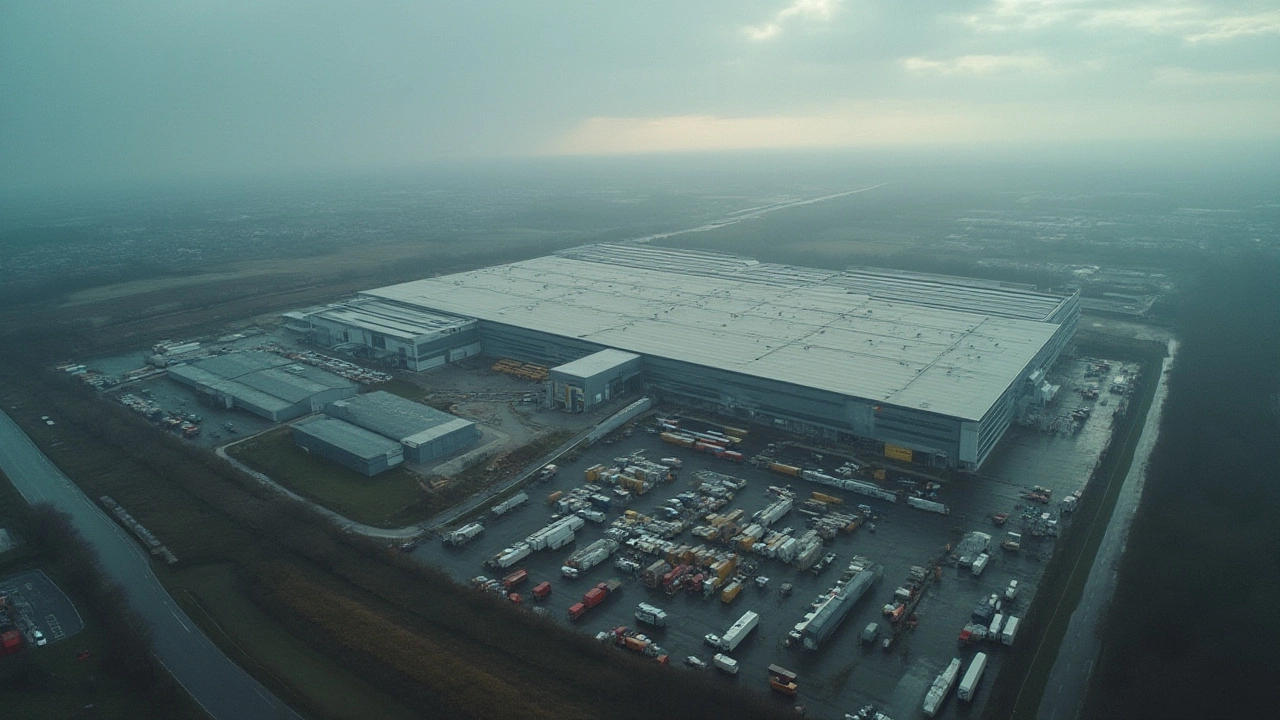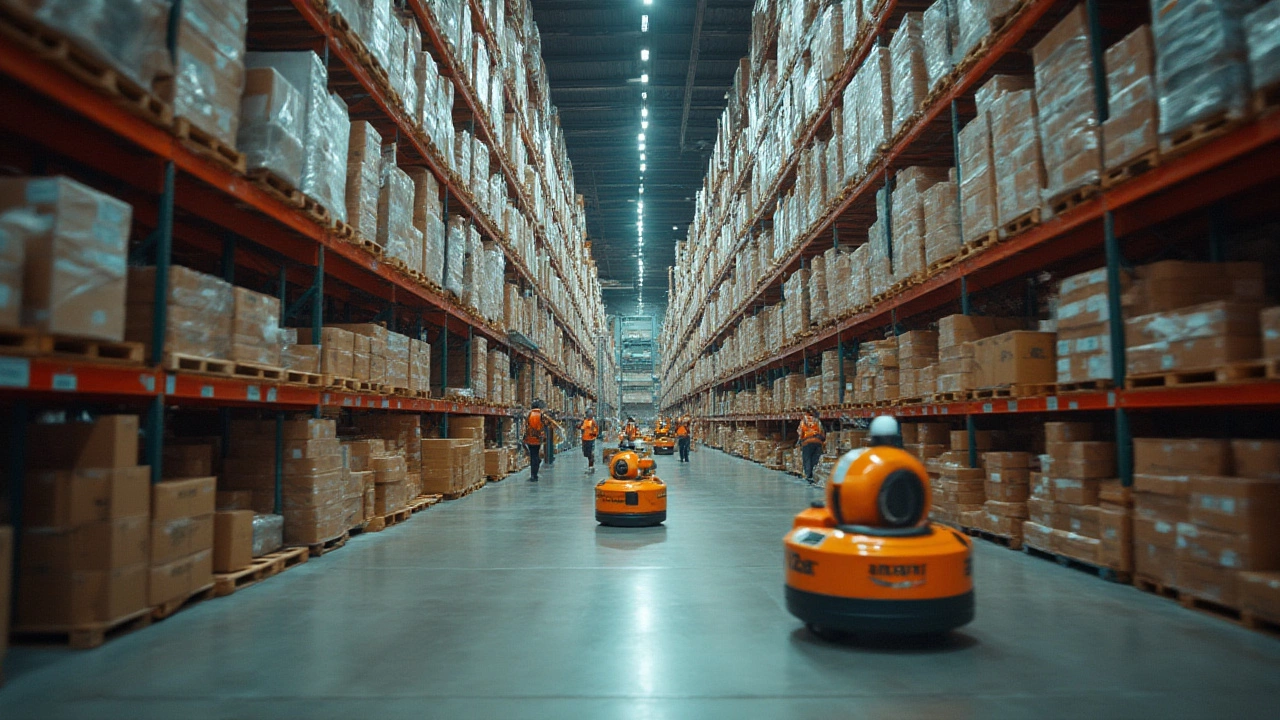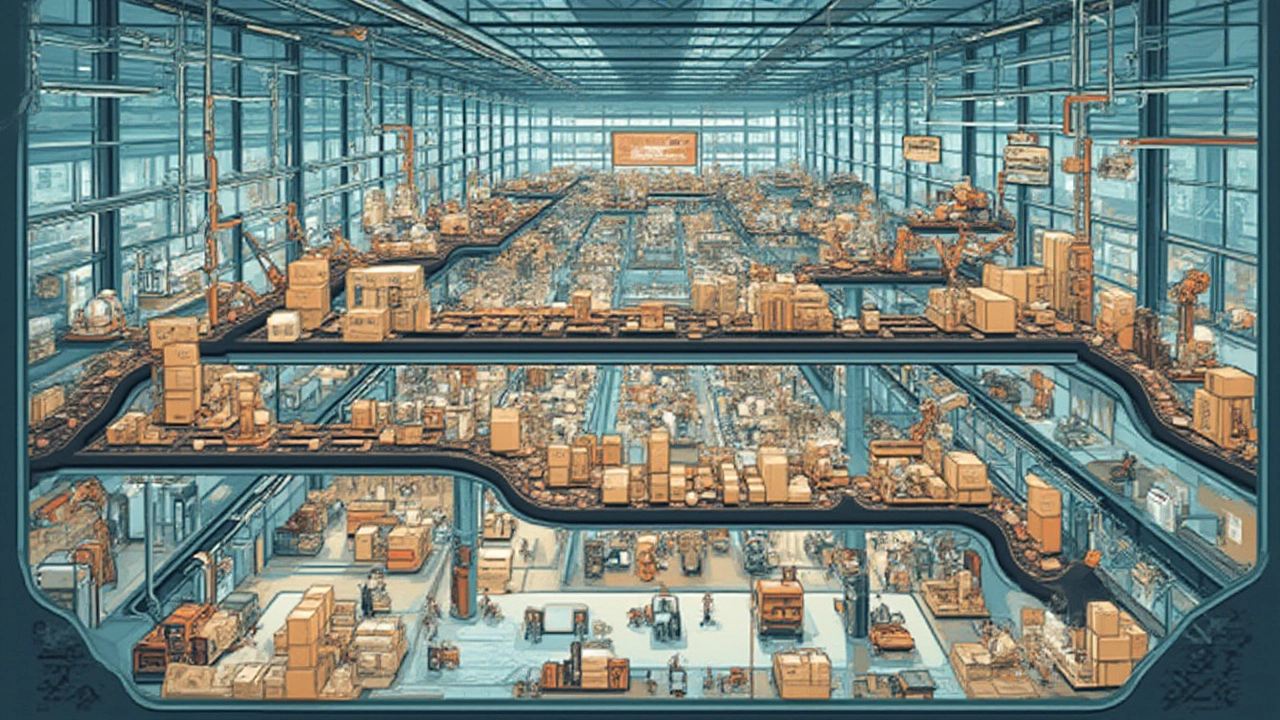Largest Amazon Warehouse: Location, Size, and What Goes On Inside

Imagine a building so vast you could fit more than 20 football fields under its roof. If you ever wondered just how huge Amazon’s biggest warehouse is—and where it’s hiding—get ready to have your mind stretched. Amazon isn’t shy about building big, but the scale it has reached would have seemed flat-out wild a couple of decades ago. People order everything from phone chargers to recliners with a single tap. But the magic behind that speed? Enormous fulfillment centers that never sleep, packed with robots, packages, and a dizzying amount of logistics tech. Let’s peek inside the largest Amazon warehouse and see what makes it special.
Where the Largest Amazon Warehouse Stands
The crown for the largest Amazon warehouse goes to a massive facility in Mt. Juliet, Tennessee, located just outside Nashville. When it opened in 2021, it turned heads for its whopping size: 3.6 million square feet. Just for comparison, that’s about 63 football fields, or more floor space than the Empire State Building covers (and that has 102 floors!). The location wasn’t just chosen on a whim. Mt. Juliet sits in the heart of the southeast, primed for rapid trucking, easy access to interstates, and close to a growing population of Amazon customers. Choosing a spot like this means Amazon can deliver faster, keep shipping costs down, and balance supply across the United States without breaking a sweat.
But here’s something that surprises most people: the Mt. Juliet warehouse is a "robotics sortable" center, meaning it’s packed with over 20 miles of conveyors and armies of orange robots zipping around, shuttling products from shelves to human "pickers." Amazon has a few other gigantic sites, like the one in Moreno Valley, California, or Texas, each clocking in near the 2–2.5 million square foot mark. But Tennessee’s takes the cake.
Why so big? Amazon’s bigger warehouses do more than just ship out a lot of cardboard boxes. These facilities act as regional anchors, storing fast-moving goods, weirdly-shaped items, and plenty of seasonal products. It’s not just about being a huge box with shelves—it’s a massive juggernaut designed to flex and adapt to surges like Prime Day or the holidays. In the Mt. Juliet facility, thousands of employees and robots work around the clock, and new orders drop in every second. Their target: get most orders out the door in less than two hours from the click. That’s insane efficiency at a mad scale.
Want some perspective on just how much stuff is moving through? In peak season, a single giant fulfillment center can process as many as a million items daily. For Mt. Juliet, Amazon’s own data says over 5,000 people are on shift most days, joined by more robots than you’d see at a convention. Then there’s the energy bill—these buildings stay brightly lit, fully air-conditioned, and are loaded with security cameras, motion detectors, and Wi-Fi tech to keep everything ticking.
Here’s a quick data table to put things in context:
| Warehouse | Location | Size (sq. ft.) | Year Opened | Key Features |
|---|---|---|---|---|
| Mt. Juliet | Tennessee | 3.6 million | 2021 | Robotics, Prime fulfillment anchor |
| Moreno Valley | California | 1.2 million | 2014 | Robotics, West Coast hub |
| Schertz | Texas | 1.3 million | 2013 | Midwest region, multi-level |
| Doncaster | UK | 1.1 million | 2017 | Europe hub, advanced robotics |
If you’re counting, that’s more than 39 acres indoors for Mt. Juliet alone. Why does size matter? It’s not just prestige—it means Amazon can keep even more inventory closer to buyers, slash wait times, and operate with eye-popping efficiency. In logistics, bigger isn’t just better. It’s almost necessary to keep up with today’s sky-high consumer expectations.

The Insanely Complex Operations Inside
So what goes on under that massive roof? Most people picture miles of shelves and forklifts, but we’re actually talking about a hyper-automated ballet of robots and humans. Mt. Juliet is all about robotics. Those squat orange robots you see in YouTube videos? Amazon calls them "drives," and there are thousands at work. They carry portable shelves stacked with products to waiting employees who grab the right item for packing. This system isn’t just cool to watch—it means fewer footsteps for human workers and split-second pinpointing of any product in that warehouse sea.
The data flowing through this place is just as jaw-dropping. Every product is tracked to within an inch of its location using barcodes, sensors, and Amazon’s wizard-level software. When you place an order, the system instantly pinpoints the closest item, signals a robot to collect it, and prepares a shipping queue—sometimes in under a minute. In peak hours, Mt. Juliet handles as many as 40,000 picks per hour. To pull that off, Amazon uses machine learning and real-time analytics, forecasting not just which products will be popular next week but where those people actually live, so the right things are in the right places. If, say, fidget toys take off on TikTok, guess where a million of them will show up? Yep, in shopping carts, and on trucks rolling out of the largest Amazon warehouse.
But with all this automation, there’s a massive need for human workers too. Robots handle the grunt work, but people still do the fine-touch jobs: quality checking, solving weird mismatches, helping new workers, and packing tricky items. Mt. Juliet features ergonomic stations—electric lifts, anti-fatigue mats, and powerful fans. Employee safety is a big deal; Amazon knows every interrupted shipment means money lost, so minimizing injury downtime gets high-tech attention too.
Did you know the building itself is even climate-controlled by artificial intelligence? Sensors monitor temperature, air quality, and even predict when certain busy areas might overheat. There’s an on-site cafeteria, health clinic, and even spaces for "mindfulness breaks" since warehouse shifts are fast and stressful. Mt. Juliet is also one of Amazon’s "Career Choice" hubs, with classrooms inside for staff to pick up new skills in tech, logistics, or even healthcare while on Amazon’s dime.
Here’s a quick peek at some average stats from the site, just to wrap your mind around the scale:
| Workers (peak) | Robots | Picks per hour | Shipments per day | Conveyor miles |
|---|---|---|---|---|
| 5,000+ | 6,000+ | 40,000 | 1,000,000+ | 20+ |
It’s no exaggeration—stopping these operations for even an hour costs millions. That’s why back-up systems, emergency generators, and even robot-maintenance crews are always working. The warehouse looks clean and tidy, but every minute is an orchestrated dance, blending people, tech, and data to keep the world’s biggest marketplace humming nearly flawlessly.

What Shoppers, Businesses, and Future Workers Need to Know
Sure, it’s wild to look at these numbers from the outside, but what does this mean for ordinary people who just want their stuff delivered quickly? For shoppers in the southeast United States, living near the Mt. Juliet warehouse makes things speedy—sometimes ridiculously so. Amazon’s largest Amazon warehouse acts as both a launchpad for one-day delivery and as a buffer when huge demand spikes in other states. When natural disasters, sudden snowstorms, or viral shopping trends mess with shipping, these megacenters become the backup ships steering the Amazon fleet safely through the storm. Ever get a last-minute birthday gift delivered on a Sunday evening? You probably have warehouses like Mt. Juliet to thank.
Business sellers on Amazon benefit too. If you want your products stored and shipped by Amazon, their Fulfillment by Amazon (FBA) program will likely route stock through one of these mega-sites. That means faster processing, easier returns, and a higher chance your goods qualify for Prime. Even smaller businesses can piggyback on the muscle of a company running at this scale, letting Amazon handle the logistics while sellers focus on making better products.
Curious about what kind of items fill the racks at a huge fulfillment center? It runs the gamut: electronics, books, clothes, household gadgets, baby gear, and plenty of oddball products. Amazon is serious about diversity—the more kinds of things stocked, the fewer times it has to postpone an order because something’s out of reach. But don’t expect furniture or TVs here; the biggest fulfillment centers focus on items weighing under 40 pounds that can fly off the shelves. Bulky or fragile stuff heads to specialized hubs closer to their buyers or directly from third-party sellers.
Jobs at the Mt. Juliet site range far beyond picking and packing. There are robotics engineers, data scientists, HR managers, on-site EMTs, security staff, building managers, and even AI programmers. Amazon likes bragging that this is not your granddad’s warehouse job. And while the pace can be intense, many staffers use these roles to springboard into tech or supply chain careers, helped by Amazon’s internal training programs. If you’re eyeing a job here, know that interviews focus as much on adaptability and tech comfort as stamina.
Quick tips for shoppers who want to leverage mega-warehouses for speedier (or greener) shipping: Always look for "Fulfilled by Amazon" Prime listings, especially for time-sensitive gifts—they almost always come from these well-oiled giants. Want to help the environment? Use Amazon Day delivery, which bundles orders together so the company can load trucks more efficiently, cutting down on energy use and single-package trips. If you’re a seller, ask Amazon support about getting your best-selling items located in key hubs like Mt. Juliet; the closer your stuff is to buyers, the more likely you’ll win the “Buy Box” and get more sales.
One thing to watch: as e-commerce keeps growing, you can bet Amazon is eyeing even bigger, smarter warehouses. There’s talk of new facilities topping four million square feet, complete with even more robots and perhaps even drone shipping bays. The bar for what counts as “large” keeps moving up, all in the name of shaving seconds from delivery and outpacing competitors.
So, next time you track a package zipping across the country overnight, picture what’s really happening behind that tracking link: once a wild logistics experiment, now a colossal network, anchored by marvels like Mt. Juliet. Amazon’s largest warehouse isn’t just an address—it’s a glimpse into the future of shopping, work, and how stuff moves in the 21st century.